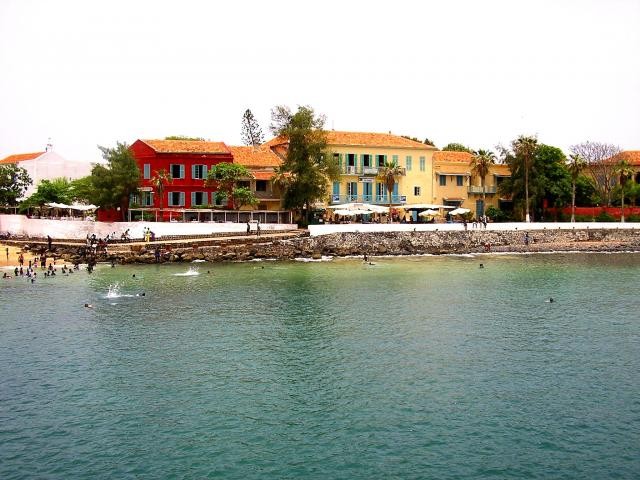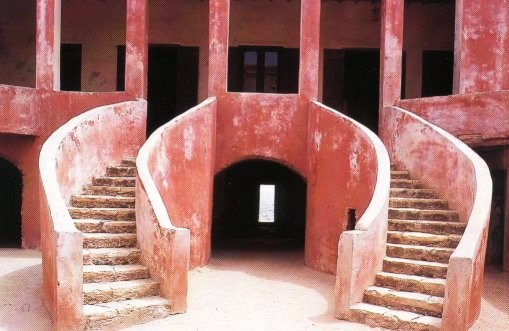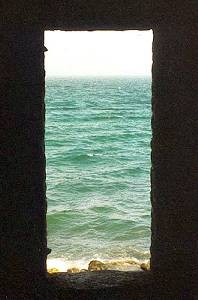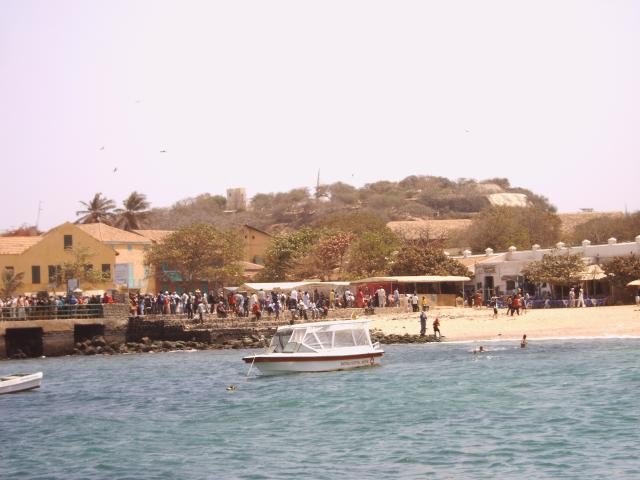Visit to Gorée Island, the island of Slaves
I spent a weekend in Gorée, also known as Slave Island, located close to Dakar. To get there, we took a boat from the coast. At the time, the return journey cost seven euros for tourists – for the Senegalese people, it was cheaper - and took about twenty minutes. The boat we went on was large, white and safe, as are a lot of tourist boats often seen visiting the coasts at home.
The town is magnificent. The houses are colourful, each one a different shade, whilst still seeming warm and unified. We found houses painted purple, ocean-blue, yellow, but never flashy. The island is part of Human World Heritage, and has as such been classified by UNESCO.
We spent the night on the island. It was very relaxing, even more so because the shower had hot water! There were also a lot of restaurants which caught our attention. We ate fish and rice in a restaurant facing the sea. I don’t remember the quality of the food, but I think it was fine considering that we were in a very, very tourist-y district. We had the chance to see a group fashion show. The women came to show off the styles, and each group was dressed in differently coloured boubous. It was beautiful. All of this was accompanied by a DjEmbe (drum), of course. The prices on the island didn’t strike me as extravagant in comparison to, for example, Saly, a coastal town. It was a bit more expensive than Dakar, but haggling was as common as it was in the city.


A short history...
The island was discovered during the 15th Century by the Portuguese on an ocean voyage. Then came the Dutch, followed by the French. The island became a flagship point in the trade of black people, and then the ensuing slave trade. You may remember the famous Triangular Trade (the purchasing of slaves - or rather kidnapping of people - in Africa, who were then sold in North America, taken to Europe along with American food and sold again in the same fashion). Well, Gorée was a key place in this system of commerce.
The House of Slaves can still be visited today. It is an important place for the island’s residents, as it commemorates this tragic period of slavery. The guide emphasised all the suffering which had been endured between those walls. The guide himself was slightly scary :s a bit eccentric! But his explanations were very good and this museum, this house, is undoubtedly a must-do if you go to the island. Ultimately, not so many slaves passed through those walls, but it is still necessary to remember, not just for the island, but for Africa in general.
The need to remember is illustrated by a very important photo, one of the door. When you enter the house, there are two great staircases which rise to the left and right, then meet at the first floor.

Below where these two staircases meet, there is a famous door through which one never returns. This image is engraved in my memory, it made such an impression. The walls are painted red and it is impossible to think of anything other than the suffering of the past.

The island now
The island was home to many residents at the beginning of the century; a fifth of the capital’s inhabitants lived in Gorée. Now there are hundreds. This is no longer news.
Today the island hosts many cultural events: exhibitions, parades such as the one I saw, concerts and all other kinds of cultural production.
I also visited the Museum of Women during my trip on the island. It is located in a large building which belonged to a wealthy old man. Then, the state repossessed it and turned it into a museum. It shows the day-to-day life of both normal and famous Senegalese women.
There is also a maritime museum, although I didn’t visit it.
Most of all, we just walked, having taken advantage of the beaches and seen some of the museums. There are some beautiful paintings in Gorée, definitely the most beautiful I have seen in Senegal; if you remember to do so, I recommend that you buy them on the island – after haggling, of course. I believe that for quite a large painting, I paid about five euros at the time. Very well haggled. They create paintings embossed with collages, it really is magnificent.

Photo gallery
Content available in other languages
Want to have your own Erasmus blog?
If you are experiencing living abroad, you're an avid traveller or want to promote the city where you live... create your own blog and share your adventures!
I want to create my Erasmus blog! →




















Comments (0 comments)